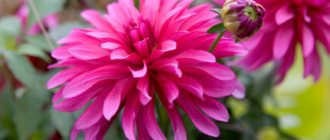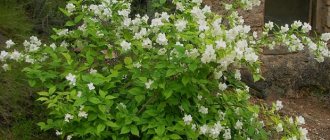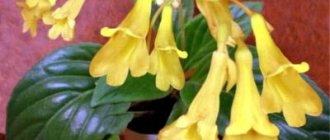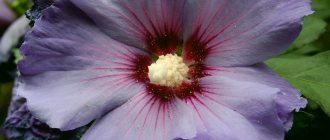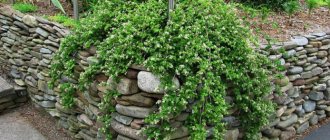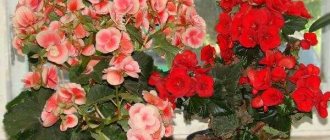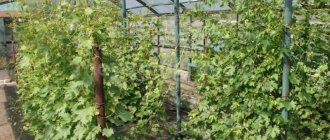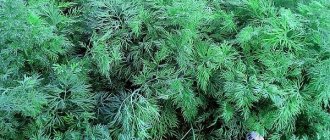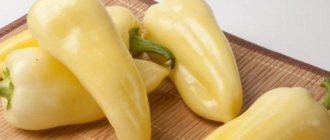Home / Care
Back
Published: 04/15/2020
Reading time: 3 min
0
21
- 1 Spring planting
- 2 Possible difficulties during cultivation
- 3 Growing from seeds
- 4 Wintering
- 5 Wintering
- 6 How to grow from seeds?
- 7 Trimming
- 8 Trimming
- 9 Autumn planting
- 10 Transfer
- 11 Watering
- 12 Planting and care
- 13 Poppy propagation
- 14 Varieties of poppy: peony, oriental and others
- 15 Most popular types
- 16 Varieties and types
Possible difficulties during cultivation
Growing terry poppy is not difficult, but many may encounter problems such as:
- too wet soil: excessive constant watering can cause the plant to wither and die;
- poor soil: with a lack of nutrients in the soil, the bushes grow small and weak, the flowers are not very large and less bright;
- dense planting: the bushes are crowded, which affects the decorative appearance of the plant, they become smaller;
- poor care: if wilted flowers are not cut off in time, they will cause the appearance of seed pods. In this case, the bush completes the vegetative period and stops flowering. Trimming faded flowers prolongs the flowering period of the bush;
- the wrong place for the plant: a corner of the garden that is too dark will cause a lack of buds.
Diseases and pests: treatment methods
The plant can often be accompanied by various diseases:
- root rot;
- powdery mildew;
- black spot fungus.
Much less often, terry poppy can become the target of attack by insect pests such as:
- aphid;
- spider mite
Sometimes, if unwanted insects are detected, it is enough to treat the bush several times with a soap solution. For more severe damage, various insecticides are used to control garden pests.
Having discovered signs of plant disease, the affected parts of the bush are cut off and burned. Leaving stems or leaves with obvious signs of the disease in the garden is dangerous; the disease can spread to other plants. To prevent and prevent the spread of the disease, the bush is treated with copper sulfate, Bordeaux mixture, and fungicides.
Trimming
After flowering is completed, the oriental poppy bush is pruned to the very root. Since, after the flower withers, all the foliage turns yellow and falls off, the bush loses all attractiveness. After some time, new leaves will appear from the rosette, slightly smaller in size than the previous ones. Complete pruning is carried out if there is no goal to collect seed material.
If there is a need to preserve poppy seeds, the bush is pruned only after the seed pods have ripened. After collecting the seeds, the bush is pruned close to the ground.
general information
Growing garden papaver from seeds is really not a difficult task. The main thing is to know which seeds to buy.
In particular, they can be presented in stores under the following names:
- papaver;
- normal papaver;
- garden papaver;
- peony-shaped papaver.
In the photo - papaver seeds
Note. The name of the plant translated from Latin means poppy. Some breeders indicate this name on the seed package - peony poppy.
The flower can be identified by the following characteristics:
- resemblance to peony;
- size;
- thick terry;
- visually the petals resemble silk.
It is interesting that in specialized stores and on the market you can find both pure varieties of this flower and a mixture.
The plants have a pleasant color.
For example, you should highlight varieties of dark burgundy tones:
- "Black dragon";
- "Purple Velvet"
Papavers come in different colors
Among other varieties, inflorescences deserve mention:
- white (“Milk Dragon”);
- pink color (“Dawn”).
Underrated flowers
Unfortunately, we have to admit that a flower like papaver is underestimated by most gardeners.
Note. Some refuse to plant it, fearing the invasion of drug hunters who could damage the flowerbed in the country or even the entire garden. After all, from a distance, after flowering, when the seed box is formed, papaver resembles a poppy. But if you cut off the seed box as soon as the petals fall, then no problems will arise.
The variety of species allows you to decorate your garden with unusual flowers.
To maximize their attractiveness, it is recommended to plant plants in groups, and choose varieties of different colors:
- pink;
- white;
- red
They look incredibly beautiful against the background of green plants and garden shrubs, for example, such as:
- thuja;
- mock orange
If you have chosen dark papaver varieties, then in order to create an attractive contrast, it is recommended to plant them on a light background, for example, this would be perfect:
- light wall;
- light fence;
- bushes with light green leaves.
When choosing a planting site, consider the background depending on the color of the inflorescences
Autumn planting
It would be more correct to call such sowing planting before winter. The seeds are placed on already sufficiently cooled soil, literally on the first snow. Poppy seeds are distributed onto the prepared area and sprinkled with dry leaves. You can forget about the seeds until spring; they will be subjected to natural stratification.
If seeds are sown on soil that has not yet cooled, they will germinate and die with the onset of cold weather. Compared to spring planting, seeds planted in late autumn will germinate earlier, therefore flowering will begin earlier. Young shoots should be covered when spring night frosts return.
We suggest you familiarize yourself with How to quickly and tasty salt cabbage
With any method of planting seeds, grown sprouts are thinned out when 3–5 leaves form, leaving a distance between plants of 10–20 cm.
Peony poppy is an amazing, lushly flowering plant. Its unpretentious nature, easy propagation, and rapid spread have long made this plant a favorite flower among many gardeners. It will easily fit into any flower arrangement and will decorate various garden landscapes. A wide range of color palettes makes the double poppy an indispensable flower in floristry and allows you to create the most extraordinary compositions.
Papaver propagation: from collecting seeds to sowing them
Peony poppy is propagated by seed. Honestly, if you plant this plant in your garden at least once, then you don’t have to worry about the need to re-sow. The culture spreads extremely easily throughout the area by self-seeding.
For the planned collection of planting material, a couple of seed pods are left on the desired bush, removing all the others in a timely manner and preventing them from ripening. If growing poppies by self-sowing is not part of your plans, you can put thin cotton bags on the boxes. Then the seeds will not fall to the ground, even if the boxes open ahead of time.
Surprisingly, in the case of self-sowing, all specimens of peony papaver retain the double flowers, but their color changes to pink or pale pinkish.
If you need a poppy of a certain color, it is better to purchase seeds at a flower shop.
You can collect the seeds when the papaver leaves begin to turn yellow. Keep planting material in a cool, dry place in paper bags. The germination and quality of fresh seeds is much higher; over time, the risk of getting weak plants and low germination increases.
Papaver can be planted both in spring and autumn. True, these methods are slightly different from each other; let’s look at each in more detail.
Sowing in spring
They begin preparing the area for sowing as soon as the snow melts and the soil warms up to 3-5 degrees. The soil is well loosened, cleared of debris and roots, and fertilized. Poppy seeds are small, so it is recommended to first mix them with sand and then scatter them more or less evenly over the soil.
The plantings are carefully sprayed with water and covered with polyethylene to protect them from possible cold snaps and also to create a greenhouse effect.
After a week, friendly shoots will appear, and after a month and a half you will be able to admire the luxurious flowering.
Planting in autumn
This is pre-winter sowing, in other words, it is carried out in already cooled soil, right before the first snow. Seeds are scattered onto a previously prepared area and covered with dry leaves. Before the warm weather arrives, you can forget about crops; natural stratification will do its job.
You can lose planting material if you sow it in soil that has not completely cooled down; the grains will germinate, but the inevitably approaching cold will simply destroy them.
Winter sowing has a number of advantages. Firstly, the sprouts will appear much faster, which means you are guaranteed to get earlier flowering. Secondly, thanks to stratification, the plants will grow stronger and more viable.
Young shoots, regardless of the sowing method, are covered with film to prevent the possible return of spring frosts. After the sprouts have formed 3-5 true leaves, they are thinned out, leaving 10-20 cm between the plants.
Transfer
Peony poppy does not tolerate transplants. This is all because of the tap root, which is difficult to remove from the ground without damaging it. Many are of the opinion that replanting is possible only in cases of extreme necessity, for example, when the plant is in danger of dying. However, this procedure is extremely painful for the papaver: the bush may stop growing, stop blooming, or even die. Since peony poppy is an annual plant, there is no point in replanting it. It’s easier to remove the bush and then replant the poppy.
Caring for poppies in the garden
Growing conditions
Growing poppy and caring for it is not burdensome: water the plant only during severe, prolonged drought. After watering, the soil is loosened between the poppies so that a crust does not form, and weeds are removed, and if you cover the area with mulch, you will have to water, loosen, and weed much less often.
Poppies in open ground are very responsive to fertilizing, although they are not necessary. Sometimes you have to treat poppy seeds for diseases or pests, but such troubles rarely happen.
Pests and diseases
Due to unfavorable weather conditions, poppies are affected by diseases such as powdery mildew, peronospora (downy mildew), Alternaria and Fusarium.
Powdery mildew is a fungal disease that covers poppy leaves with a white cobwebby coating, which soon disappears, but instead the fruiting bodies of the fungus appear on the leaves - small black and brown grains. Powdery mildew depresses the plant and greatly reduces the poppy yield. When the first signs of the disease appear, it is necessary to spray the poppy with a solution of 40 g of copper oxychloride in 10 liters of water or a solution of 30-50 g of soda in a bucket of water. The drug Medex is effective in the fight against powdery mildew, and the most effective folk remedies are garlic infusion and mustard suspension.
Downy mildew, or downy mildew, is also a fungal disease in which poppy leaves become covered with red-brown spots and become deformed, and the flower stalks and stems become bent. Then a gray-purple coating consisting of fungal spores appears on the stems and undersides of the leaves. Downy mildew inhibits seedlings, and the adult affected plant forms small boxes with fewer seeds. They fight peronosporosis with the same means as powdery mildew.
Fusarium wilt is also caused by a fungal infection and appears as dark spots on poppy leaves and stems. The plants begin to dry out, and the boxes remain underdeveloped, deformed, wrinkled and turn brown. Fusarium affects the vascular system of the plant, and it is impossible to cure this disease. Diseased specimens should be removed immediately, and the soil where they grew should be spilled with a fungicide solution.
Alternaria blight appears as a spotted olive coating on poppy leaves and pods. This is also a fungal disease. Against it, poppy is treated with drugs such as Bordeaux mixture, Kuproxate, Oxychloride and Fundazol.
To prevent the activation of fungal infections, it is necessary to observe fruit rotation: grow poppy after poppy no earlier than three years later. Every autumn, destroy all plant debris in the garden and vegetable garden and dig up the soil to the depth of a spade bayonet.
Of the pests, the poppy is most often annoyed by the weevil, or poppy secretive proboscis - a beetle that damages the roots of poppies. The larvae of the secretive proboscis feed on the leaves of the plant. Sometimes aphids may appear on the stems and bolls. To avoid sharing the poppy harvest with weevils, add granular ten percent Bazudin or seven percent Chlorophos to the soil before sowing.
If you have a perennial poppy growing, then plant these preparations in the soil between the bushes, and when the poppy sprouts, treat the leaves with Chlorophos solution twice or thrice with an interval of 10 days. Spraying poppies with Antitlin, Aktara or Aktellik is used against aphids.
- Video about pruning Buddleia Davida
Poppy after flowering
The annual poppy is simply destroyed after the flowers fade, but if you want to prolong flowering, remove the seed pods as soon as they begin to form. If you do not trim the seeds, then next spring seedlings from self-seeding will appear in this place. In autumn, the area is cleared of poppy plant residues and dug up.
After flowering, perennial poppy loses its decorative effect, and its ground part is cut off at surface level. Perennial poppy species and varieties do not need shelter for the winter, but if you are afraid of a frosty and snowless winter, cover the area with poppy with dry leaves or spruce branches: this will not make the poppy any worse.
Varieties and types
https://www.youtube.com/watch?v=W4UFyMFzmxQ
Oriental poppy has numerous varieties. Thanks to selection, plants of different heights, with petals of unusual shape and amazing shades were obtained. Garden forms of the oriental poppy with white, pink, orange, lilac, purple flowers, with smooth, jagged, double petals can be found almost all over the world. Most of the different varieties of oriental poppy are of hybrid origin. Today there are more than two hundred species of oriental poppy.
Varieties of poppy: peony, oriental and others
Prohibited for cultivation:
- Sleeping pill, opium (P. somniferun).
- Bristle-bearing (P. setigerum).
- Bract (P. bracteatum).
- Oriental (P. orientale).
Annual poppies
| Type Variety | Description | Flowers |
Hypnotic, opium (P. somniferum)
| Up to 100 cm in height, the stems are dark green, glossy, the leaves become more elliptical the closer to the inflorescence. Flowering lasts 4 weeks. | About 10 cm, the petals can be either regular or double, of various colors - red, yellow, dark burgundy, purple with dark or white spots, fall off towards sunset. Prohibited for cultivation. |
Peony, hypnotic (P. somniferum)
| They resemble a peony measuring 15 cm. The color range is from inky to black, two-tone with jagged tips, delicate pink, scarlet and snow-white. | |
Samosevich, wild (P. rhoeas)
| The stem grows up to 60 cm, is covered with hairs, closer to the root the leaves look pinnate, separate, tripartite on the stem. | The colors are white, scarlet, coral with dark edges, pink with a dark core. Inflorescence less than 10 cm wide, regular or double |
Caucasian Red (P. commutatum) or Modified (P. commutatum)
| Grows up to 70 cm. | Pinnate, bipartite with a black core up to 20 cm. Blooms from July to September. |
| Peacock (P. pavoninum) | The branches are rounded at the ends 3-5 cm, the stem is bristly, the leaves are green, pinnately dissected. | They can be of different shades, terry or regular. Blooms in mid-summer. |
Perennial poppies
| Type Variety | Description | Flowers |
Oriental (P. orientale)
| Reaches 1 m, the stem is straight, thick, fleecy, the foliage is pinnate, dissected, they are shorter at the bottom. It blooms for only 2 weeks. | Bright scarlet flowers up to 20 cm in size with a black core. Varieties have been developed that are coral-colored with a small dark center and have bright orange flowers ranging from ash white to pale pink. Prohibited for cultivation. |
| Alpine (P. alpinum L.) | A low plant up to 0.5 m, with an abundance of fleecy leaves. | The inflorescence size is no more than 4 cm, the flowers can be orange, white and red. |
| Rockbreaker (P. rupifragum) | Biennial, blooms in the 2nd year with the beginning of spring, grows about 45 cm, with a dense number of leaves. | A variety of glossy dark orange to brick-hued flowers appear on the stem. |
Holostalk, Icelandic (P. nudicaule)
| Grows up to 0.5 m, the stem is prickly, the foliage is pale green, directed downwards. It blooms in May and blooms until the end of September. Can be placed in vases. | The inflorescence size is up to 5 cm and can be regular or double; the flowers are red, yellow, white or pink with a yellow edging. |
| Saffron (P. croceum) | Stretches up to 30 cm, dark greenish leaves or light, hairy. It blooms from early spring to October; this variety is native to Eastern Siberia, Central Asia and Mongolia. A completely poisonous plant (from the stem to the flower). | The inflorescence size is up to 20 cm, the color of the petals is from yellow to orange. |
Botanical description
Peony papaver is an annual plant that is a single flower with an even stem up to 90 cm high. It has medium-sized leaves in the form of teeth and large, double flowers with numerous whole petals. Flowers can be of various shades: from white to dark burgundy and even black. There are varieties with heavily dissected petals, reminiscent of carnations. The fruit of the flower is a capsule with small cellular-mesh seeds.
Find out how the oriental poppy differs from the opium poppy (sleeping pill) and which species cannot be grown on the site.
Application in landscape design
The main use of self-sown poppy is the creation of meadow lawns. Compared to regular lawns, they are colorful and do not require frequent mowing. On picturesque lawns, poppies get along well with other wildflowers: daisies, cornflowers, flax, and snakehead.
Continuous poppy crops look beautiful, especially in one color. You can also make a monoflower from it, include it in a mixborder, or sow it in the front garden in front of the house in a mixed flower bed. In the paved courtyard, the colorful plant is planted in flowerpots, making it easier to control its spread.
Since poppy flowers do not have a long lifespan (only 2-3 days), they are not suitable for cutting. But if you really want to decorate the room with a poppy bouquet, you can cut the plants at the stage of blooming buds and dip the ends of the stems in hot water. In this case, the bouquet will last several days longer.
How to grow self-sown poppy
Self-sown poppy is grown by sowing seeds in the ground. You don’t even need to make furrows and water them. The seeds are simply scattered on the surface of well-loosened soil, after which the soil in the area is lightly beaten with the back of the rake. This technique promotes better adhesion of the seed to the soil and rapid germination.
Poppy grows in well-lit areas with light, fertile soils. Sandy loam soils fertilized with humus are also suitable for its cultivation. It is better to avoid swampy places or water close to the soil surface, since the plant does not tolerate stagnant moisture.
It reproduces well by self-sowing, as evidenced by its name. If the spread of seeds is not controlled, in a couple of years the poppy will fill all areas of the garden and will have to be pulled out like a weed. But for many, this feature of the plant is not a nuisance, since flowering poppy thickets look very picturesque.

